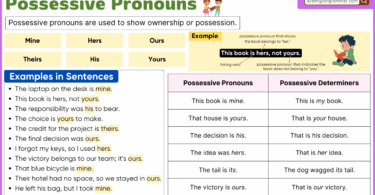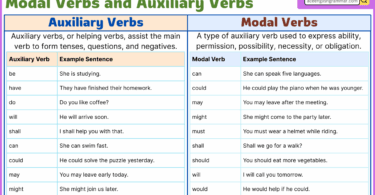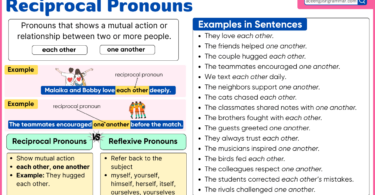A verbless clause is a group of words that functions like a clause but does not include an explicit verb. Unlike standard clauses, it may lack a subject-verb structure but still communicates a complete idea. These structures are common in informal speech and written English, especially in headlines, captions, and quick descriptions. In this post, you’ll learn the definition, structure, and types of verbless clauses, along with real-life examples to help you identify and use them confidently.
Table of Contents
What Are Verbless Clauses?
A verbless clause is a dependent clause that doesn’t contain a verb but still has meaning because the verb can be implied or inferred from the context. Typically, verbless clauses omit the verb to be when it is understood from the surrounding sentence.
For example:
- With a verb: While she was tired, she kept working.
- Verbless: While tired, she kept working.
In the second sentence, we understand that the word was is implied, even though it’s not present. This is how verbless clauses operate—they omit the verb but leave enough context for the sentence to still make sense.
Verbless Clause Structure Explained
To create a verbless clause, you usually start by removing the verb from a full clause. The meaning of the sentence remains clear because the verb is easily understood from the surrounding context. This works particularly well with adjectives, nouns, and prepositional phrases.
1. With Adjectives
Verbless clauses often omit the verb to be when paired with an adjective.
- Full clause: Although she was happy, she didn’t show it.
- Verbless clause: Although happy, she didn’t show it.
In this example, the verb was is understood and does not need to be stated explicitly.
2. With Prepositional Phrases
Prepositional phrases are another common structure where verbless clause is used effectively.
- Full clause: After the meeting was over, they left the office.
- Verbless clause: The meeting over, they left the office.
In this case, the phrase “The meeting over” implies “The meeting was over,” making the verb unnecessary.
3. With Noun Phrases
Verbless clauses can also appear with noun phrases, usually in informal or conversational English.
- Full clause: The car being broken, we took the bus.
- Verbless clause: The car broken, we took the bus.
Here, “The car broken” replaces “The car was broken” because the context makes the meaning clear.
When and Why to Use Verbless Clauses in English
Verbless clause is primarily used in informal speech and narrative writing, where conciseness is often prioritized. It help streamline communication, making it quicker and more direct. Verbless clauses can:
- Simplify sentences by eliminating unnecessary words.
- Create a sense of immediacy or urgency in the text.
- Add variety to your writing style, especially in creative or literary works.
For instance, in storytelling, you might come across verbless clauses like:
- “Dinner finished, they moved to the living room.”
- “Her eyes wide with surprise, she stared at the gift.”
Common Verbless Clause Mistakes (and How to Avoid Them)
While verbless clause is helpful for conciseness, they can lead to confusion if not used properly. Here are a few things to watch out for:
1. Overusing Verbless Clauses
Using too many verbless clauses in a single text can make your writing feel incomplete or awkward, especially in formal settings. Always balance verbless clauses with full sentences for clarity.
- Too many: Angry, she stormed out. The door shut, we sat in silence. No one spoke, the room quiet.
- Better: Angry, she stormed out. After she shut the door, we sat in silence, no one daring to speak in the now-quiet room.
2. Creating Ambiguity
If the implied verb isn’t clear from the context, your sentence may confuse the reader.
- Unclear: The teacher smiling, they listened.
- Clear: The teacher was smiling, and they listened attentively.
In the first example, it’s not immediately clear what’s happening because the verb is too ambiguous. Including a verb like was can clarify the situation.
Verbless Clause vs. Reduced Relative Clause
It’s important to note that verbless clause is not the same as reduced relative clauses. A reduced relative clause also omits some elements, but it retains a verb (often in participle form).
- Full relative clause: The man who is standing over there is my uncle.
- Reduced relative clause: The man standing over there is my uncle.
The main difference is that reduced relative clause keep a participle (e.g., standing), while verbless clause omit the verb entirely.
Examples of Verbless Clauses in Different Contexts
Let’s examine a few more examples of verbless clauses to see how they work across various contexts.
1. In Casual Conversation
- Full: If you are ready, we’ll leave now.
- Verbless: If ready, we’ll leave now.
2. In Literature
- Full: When the sun was setting, the view became breathtaking.
- Verbless: The sun setting, the view became breathtaking.
3. In Instructions
- Full: When the task is complete, submit your work.
- Verbless: Task complete, submit your work.
How to Identify and Analyze Verbless Clauses (With Tips)
To spot verbless clauses, look for phrases that seem incomplete at first glance because they lack a verb. Then, see if the verb can be easily implied from the rest of the sentence or the surrounding context. For example:
- With a verb: Because he was exhausted, he went to bed.
- Verbless: Exhausted, he went to bed.
The missing verb (was) is implied, making this a verbless clause.
Conclusion
Verbless clause is an effective tool in English grammar, allowing writers and speakers to omit verbs while maintaining meaning and clarity. By understanding how to form and use these clauses, you can improve both your fluency and your ability to communicate concisely.
While verbless clause offer simplicity and variety, be sure to use them appropriately, especially in formal writing. As with any grammar structure, practice will help you master when and where to apply verbless clause effectively in your writing and speech.
Read More




